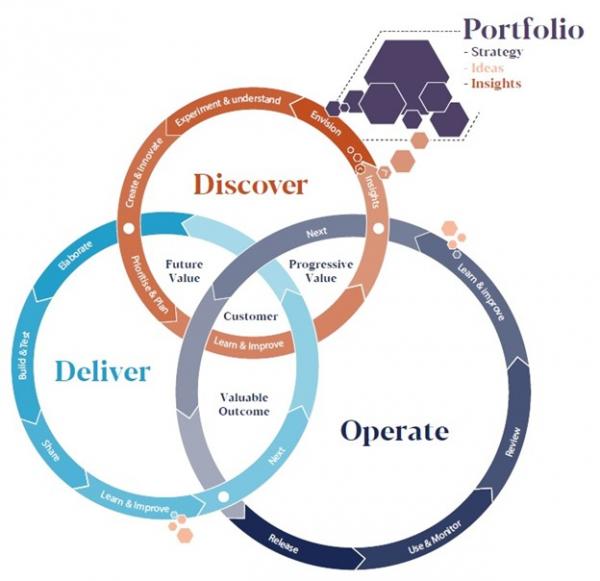The Agile World Needs More Stickers
When Joshua Kerievsky first launched Modern Agile as a simpler and more streamlined approach to agile, he was asked whether it was a framework or a methodology. He simply replied that it was “a sticker”. I imagine a lot of thought had gone into ‘modernising agile’ and breaking it down into four guiding principles and then going on the speaker circuit to promote this sticker. To downplay his work in this way gave him instant cult hero status.
But of course, Modern Agile couldn’t be either a framework or a methodology. Although Joshua started to identify practices in his early thinking, the eventual design of Modern Agile had no defined structure or system. There wasn’t a method one could follow or a specific practice in order to be categorised as either a:
Framework: “a basic structure underlying a system, concept, or text.”
Or a methodology: “a system of methods used in a particular area of study or activity.”
Modern Agile is a set of principles, a system of belief or a mindset that drives certain behaviours all packaged together as a sticker.
Principle: “a fundamental truth or proposition that serves as the foundation for a system of belief or behaviour or for a chain of reasoning.”
Sticker: “an adhesive label or notice, generally printed or illustrated.”
Why did Joshua feel compelled to write Modern Agile? In his words:
“Modern Agile is ultra-light, the opposite of mainstream Agile, which is drowning in a bloated tangle of enterprise tools, scaling frameworks and questionable certificates that yield more bureaucracy than results.”
So, to provide the alternative path to what he describes as “mainstream agile” Joshua promotes four principles and calls it a sticker. Gutsy move. Gusty because history shows that in a business sense enterprise tools, scaling frameworks and questionable certificates eat principles for breakfast!
The first challenge with being principles-based is that it relies on well, principles. “Make people awesome” for instance can have a lot of variances depending on your perception, context and buy-in all of which will determine the level of impact this principle will have. The intent of this principle in Modern Agile is that ‘people’ is ‘everyone’ in the ecosystem of the product or service – very much centred around the mindset that ‘we all win together’ and inspired by Kathy Sierra’s book Badass: Making Users Awesome. Consider your work environment and the impact an individual with an alternative viewpoint could have on this one principle.
The second challenge with being principles-based is that it isn’t tangible. In an age where we are all looking for the outcomes that organisational agility promises, leaders buy into the value proposition of agile but what they buy is the enterprise tools, scaling frameworks and questionable certificates as the tangible asset. The story of ‘Spotify’ is a prime example of this challenge in action. Henrik Kniberg and Anders Ivarsson went to great lengths to explain it was Spotify’s unique culture, their own guiding principles, that was at the heart of their success. They captured Spotify’s current way of working in a 2012 whitepaper and BOOM, the Spotify Model was born. I bet many people can quickly sketch out the ‘tribes, squads, chapters and guilds’ structure. Can you equally describe the cultural elements that led to this way of working?
So, what the agile world needs is more stickers! Stickers that make a principles-based approach more tangible. Honing in on two of the Modern Agile principles; experiment and learn rapidly, and deliver value continuously. The team at SoftEd would like you to consider adding this “sticker” to your collection:

Take a moment to consider your organisation and the phases represented. Ask yourself:
- Is your customer at the centre of every learning cycle in your organisation?
- Is your strategic vision broken down into smaller elements and experimented with?
- Have you interconnected your discover activity with your deliver activity, or have you inadvertently created two new silos?
- Is your operate cycle a place of learning and adding progressive value or a place where innovation goes to die?
Our “sticker” is our assertion that value delivery is the engine room of every organisation, with customers at the heart of our efforts. Our “sticker” advocates a culture of learning, experimentation, and organisational agility designed to sharpen your focus so you can deliver maximum value to your business – and your customers.
Posted by Daniel Luschwitz.
Thank you!
Your details have been submitted and we will be in touch.
Thank you!
Your details have been submitted and we will be in touch.